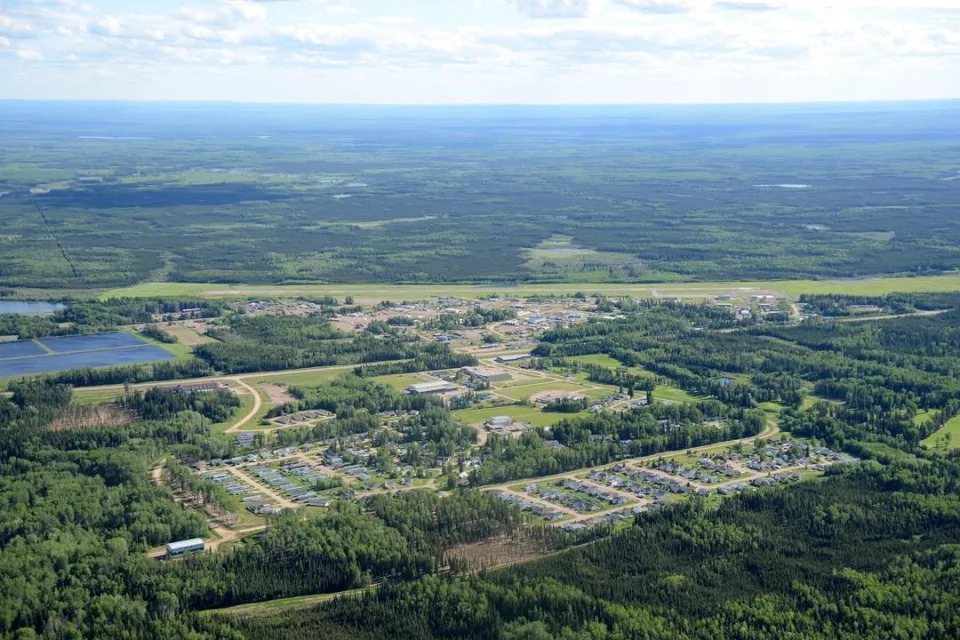A long-overlooked climate solution, geothermal could be in for its hottest decade yet
The Canadian Press
Wed, December 27, 2023

CALGARY — It's clean, renewable, and right there below our feet, but geothermal energy has largely remained undeveloped in Canada.
However, the climate crisis and the need to reduce reliance on fossil fuels is suddenly driving renewed interest in the high temperatures that occur naturally deep within the earth.
And with technology continuing to advance, proponents hope that — after years of false starts — this could finally be the geothermal industry's decade.
John Redfern, CEO of Calgary-based geothermal company Eavor Technologies Inc., said it has been known for a very long time that Canada is sitting on vast geothermal energy resources.
But unlike Iceland, where geothermal resources account for 30 per cent of electricity production, or California — which has 650 active geothermal wells, accounting for nearly six per cent of the state's electricity production — Canada has lagged behind.
"The principles have been known forever. We know the heat source is down there. We know that every kilometre you go down you get an extra 30 degrees Celsius. It's just a question of going down deep enough and extracting it," Redfern said.
"But there are reasons it didn't take off in the past. So the essential question is, 'Why now? What's changed?'"
This country has not a single commercial geothermal power project in operation, in spite of the fact that there have been fits and starts of interest in geothermal electricity generation as far back as the 1970s. At that time, a global oil crisis was driving interest in alternative forms of energy.
But back then, geothermal could never be proven to make economic sense. Unlike Iceland, whose unique volcanic geology means geothermal resources can be found very close to the surface, in Canada, it can be hugely expensive to drill as deep as is required to reach truly high temperatures.
That's starting to change, as companies develop new technologies that make geothermal production more efficient. Eavor, for example, has developed a proprietary closed-loop system that makes geothermal generation scaleable even in the absence of certain geological features.
Another company, E2E Energy Solutions, focuses on repurposing depleted oil and gas production assets such as existing wellbores, pipelines, and reservoirs. The Calgary-based firm says its technology can be used to upgrade the temperature of saline aquifers to be commercially viable where conventional exploitation methods do not.
E2E recently announced a first-of-its-kind pilot project with the town of Rainbow Lake — population less than 1,000 — in northwest Alberta.
Dan Fletcher, the town's chief administrative officer, said Rainbow Lake aims to become the first municipality in Canada to be fully powered by geothermal energy as early as 2028.
"The Canadian Geothermal Energy Association did a report that identified Rainbow Lake as having this great potential for geothermal," Fletcher said.
"And that kind of caught our interest. You know, we're a historical oil town, but this could be something that could be very different for us — a new economy, effectively."
E2E founder Domenico Daprocida said even with recent technological advances, geothermal remains more expensive than other renewable power solutions such as wind and solar.
But it also has a major advantage over wind and solar, in that it doesn't stop working when the sun isn't shining or the wind stops blowing. A geothermal plant's ability to produce dispatchable, on-demand power — all while occupying a fraction of the land required by a wind or solar farm — is very appealing, he said.
"A geothermal plant is the closest thing you can get to a gas-fired power plant, providing base-load power — but renewable," Daprocida said.
"I think at some point it's going to pass wind and solar here in terms of the number of installed facilities, just because of the limitations of wind and solar."
Canada's first geothermal power facility will likely be one currently being developed in southern Saskatchewan by a privately held company called Deep Corp. The company has raised $27 million in private equity, as well as more than $25 million in government funding, and hopes to have its facility fully commissioned by the end of 2025.
One thing working in the geothermal industry's favour is that the skills, engineering know-how and drilling technology required are virtually the exact same as that used in the oil and gas sector — it just requires deeper drilling, said Deep Corp. president and CEO Kirsten Marcia.
"Here in Saskatchewan, we're surrounded by drilling rigs, we're developing oil and gas resources," Marcia said.
"Well, we drill right past those resources to get to our geothermal resources."
Marcia said she believes geothermal will have a "massive seat at the table" in the future due to its power-generating ability, but also because of its potential to be used to heat homes in Canada's chilly winters.
But while geothermal may be on the cusp of its breakthrough decade, there is a great deal of work still to be done.
"When you think of Iceland or these major geysers in California, those projects were developed early on because they're obvious. You know (the resource) is there." Marcia said.
"But when you're standing out in the middle of a canola field near our project near Estevan, Saskatchewan, the last thing you're thinking of is the geothermal resource beneath your feet," she added.
"For us, we have to drill three-and-a-half kilometres down and then three kilometres horizontally in order to access it. That's not easy. It's very hard, and there's a lot that goes into that."
This report by The Canadian Press was first published Dec. 27, 2023.
Amanda Stephenson, The Canadian Press
No comments:
Post a Comment